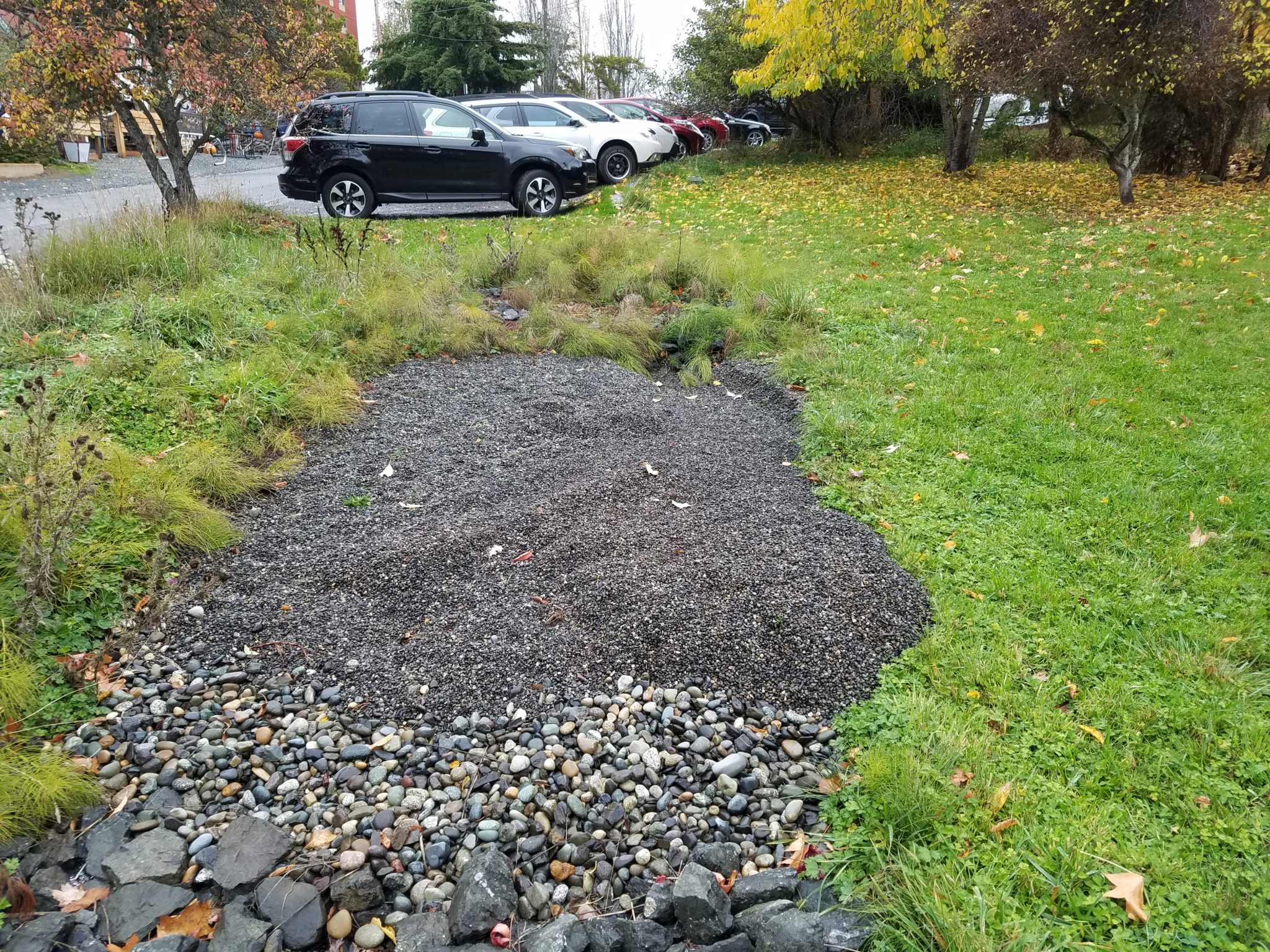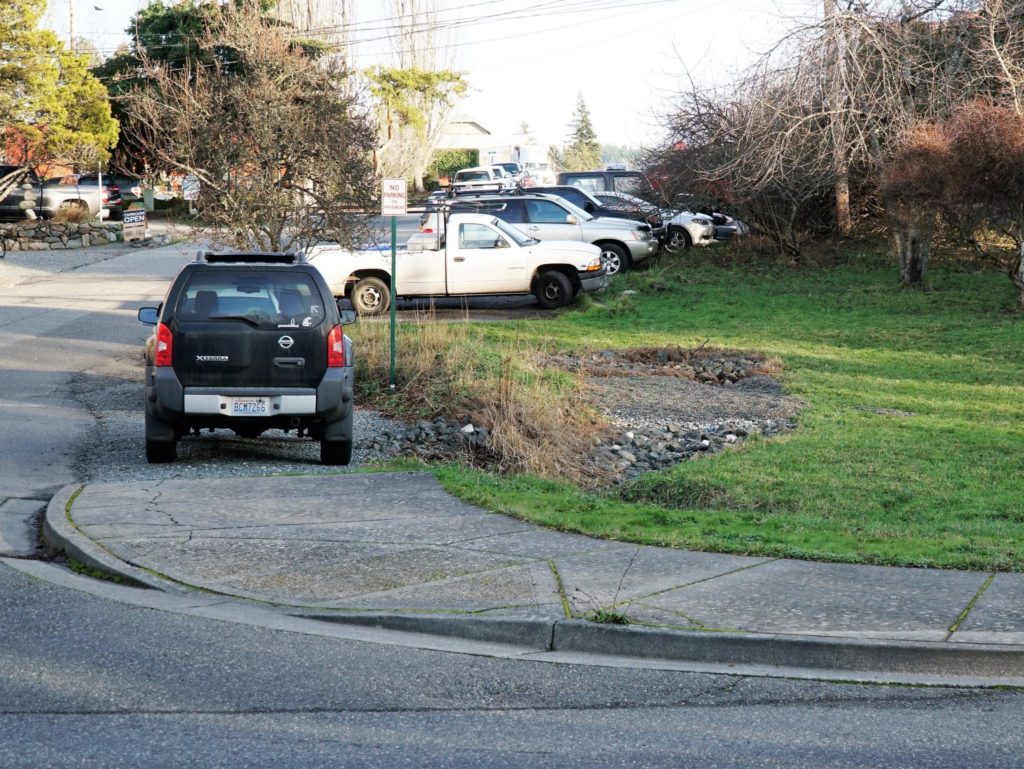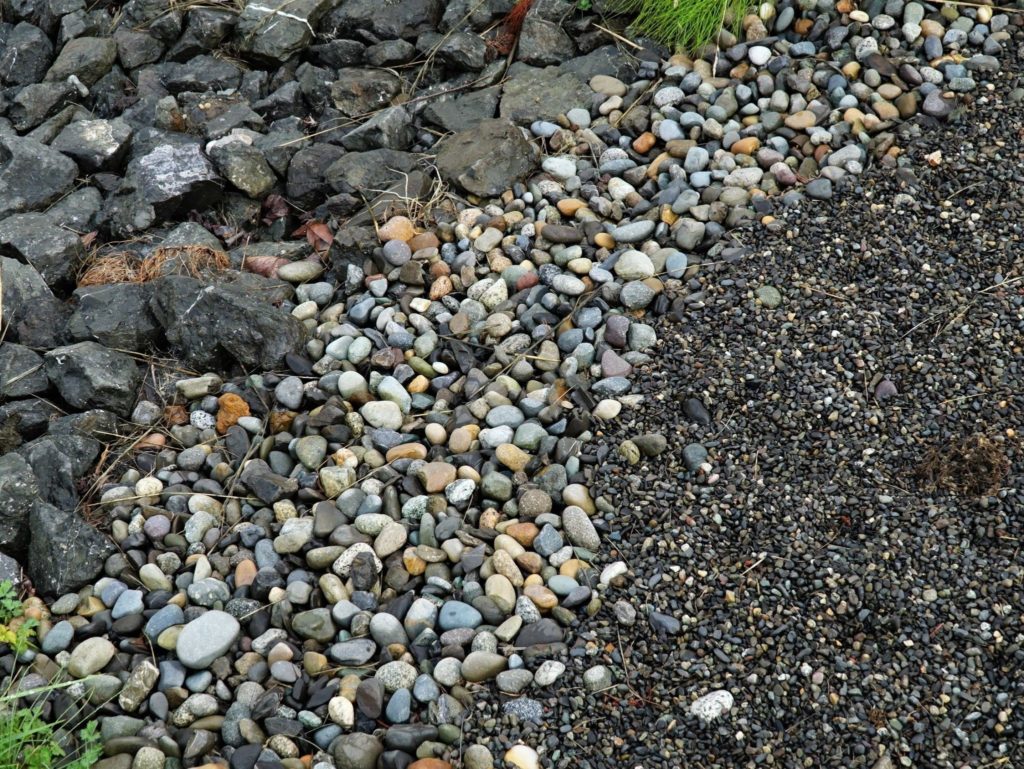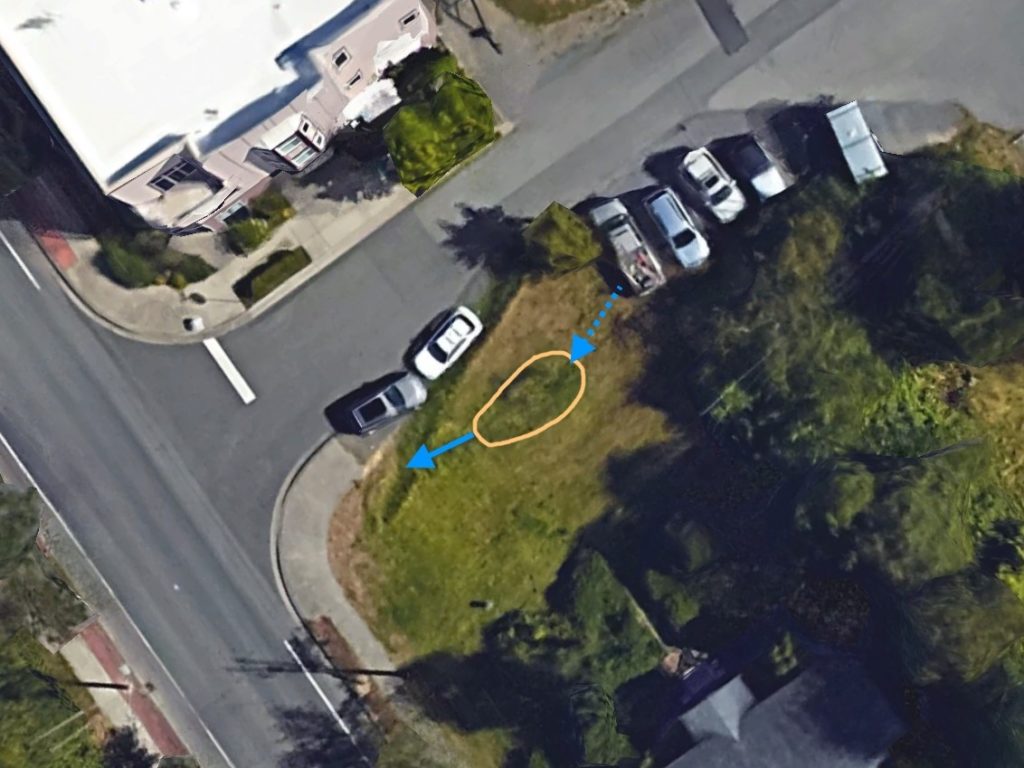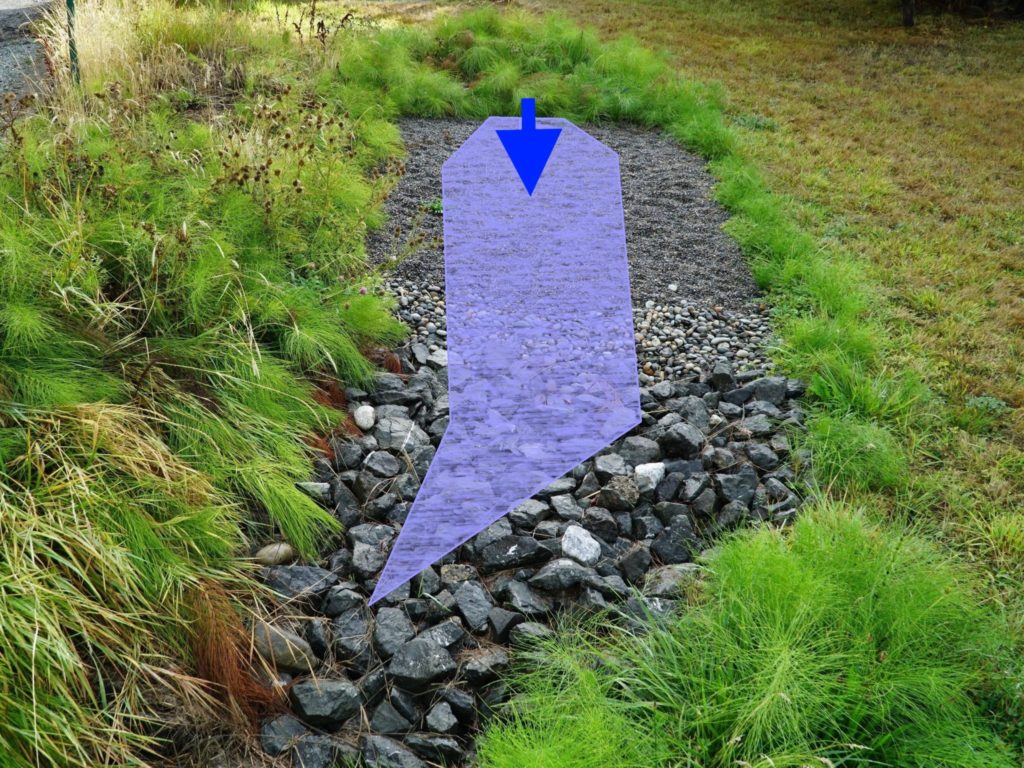Where is this located? It’s in a grassy area at the southeast (uphill) corner of 10th Street and Larrabee Avenue. Look for a bed of rocks and gravel in a grassy area.
What’s special about this place? This is the only filter of its kind in Bellingham using gravel as the cleaning medium. This unassuming section of rocks and gravel is actually a stormwater filter and captures polluted runoff from the buildings, streets, and parking lots along Larrabee Avenue. Gravel is particularly effective at holding back sediment, small particles, and pollution so that cleaner water comes out the other end. The gravel slows the flow of runoff giving sediment, small particles, and pollutants time to settle out in the gravel. The runoff is not yet clean enough, so to complete the job, the runoff is taken downhill via pipes to the stormwater facility at the 8th Street Bioscape for final cleaning. It then flows into Padden Creek.
From here, it’s easy to access the Padden Creek Trail system from 10th Street and Donovan Avenue. If you follow the trail upstream, you’ll see extensive habitat work which restored Padden Creek’s stream channel and banks, so salmon and other creatures can thrive. Follow the Lower Padden Creek trail all the way to Bellingham Bay.
See the Fairhaven Discovery Tour map for routes and additional information.
image gallery
select any photo to see a slideshow
